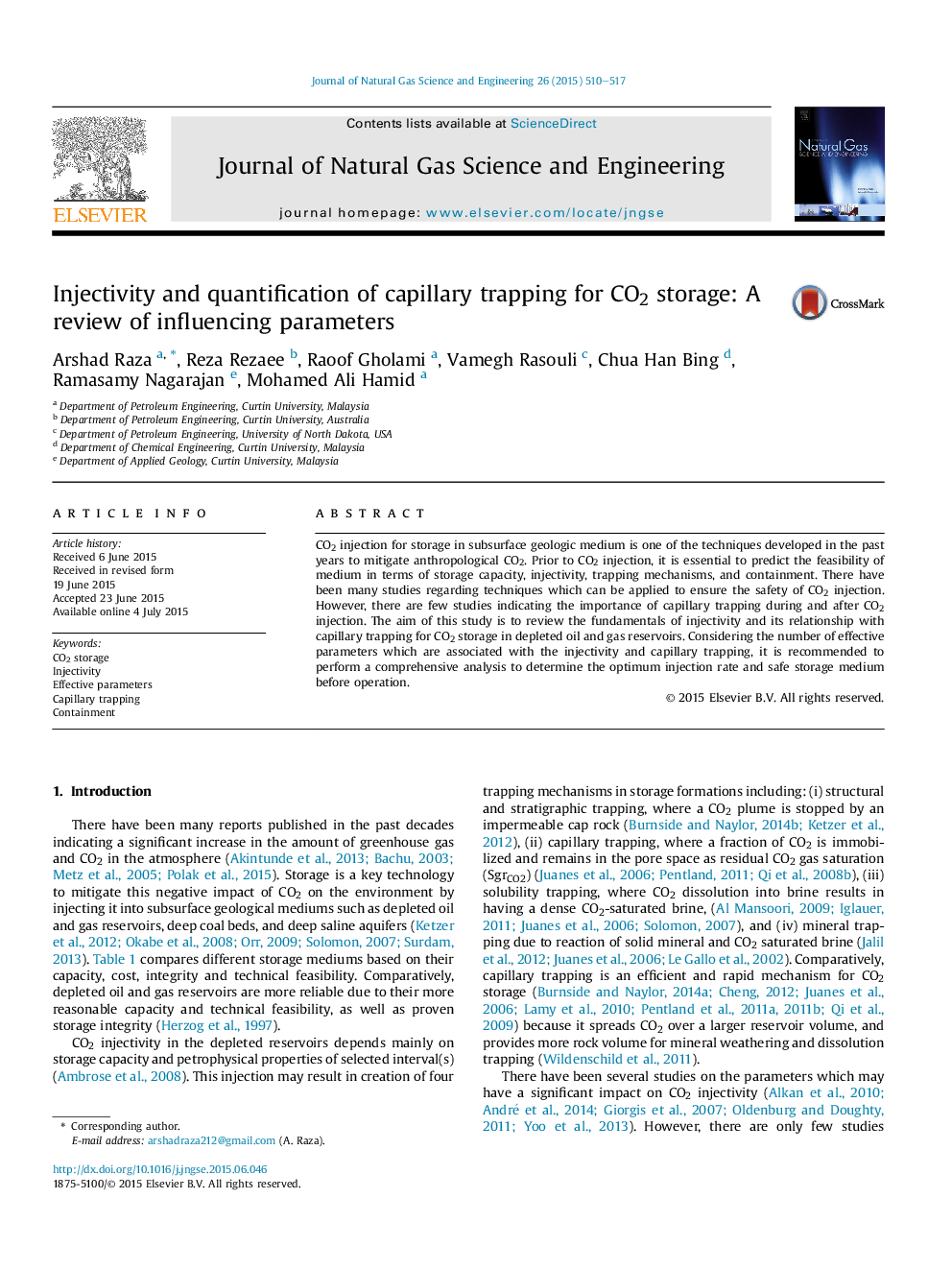| Article ID | Journal | Published Year | Pages | File Type |
|---|---|---|---|---|
| 1757542 | Journal of Natural Gas Science and Engineering | 2015 | 8 Pages |
•Pore pressure and in-situ stress are used to calculate safe injection pressure.•Mineral dissolution/precipitation have an impact on permeability and injectivity.•CO2 injection changes in the magnitude of in-situ stresses.•Fracture analysis is necessary before and after capillary trapping experiments.
CO2 injection for storage in subsurface geologic medium is one of the techniques developed in the past years to mitigate anthropological CO2. Prior to CO2 injection, it is essential to predict the feasibility of medium in terms of storage capacity, injectivity, trapping mechanisms, and containment. There have been many studies regarding techniques which can be applied to ensure the safety of CO2 injection. However, there are few studies indicating the importance of capillary trapping during and after CO2 injection. The aim of this study is to review the fundamentals of injectivity and its relationship with capillary trapping for CO2 storage in depleted oil and gas reservoirs. Considering the number of effective parameters which are associated with the injectivity and capillary trapping, it is recommended to perform a comprehensive analysis to determine the optimum injection rate and safe storage medium before operation.
